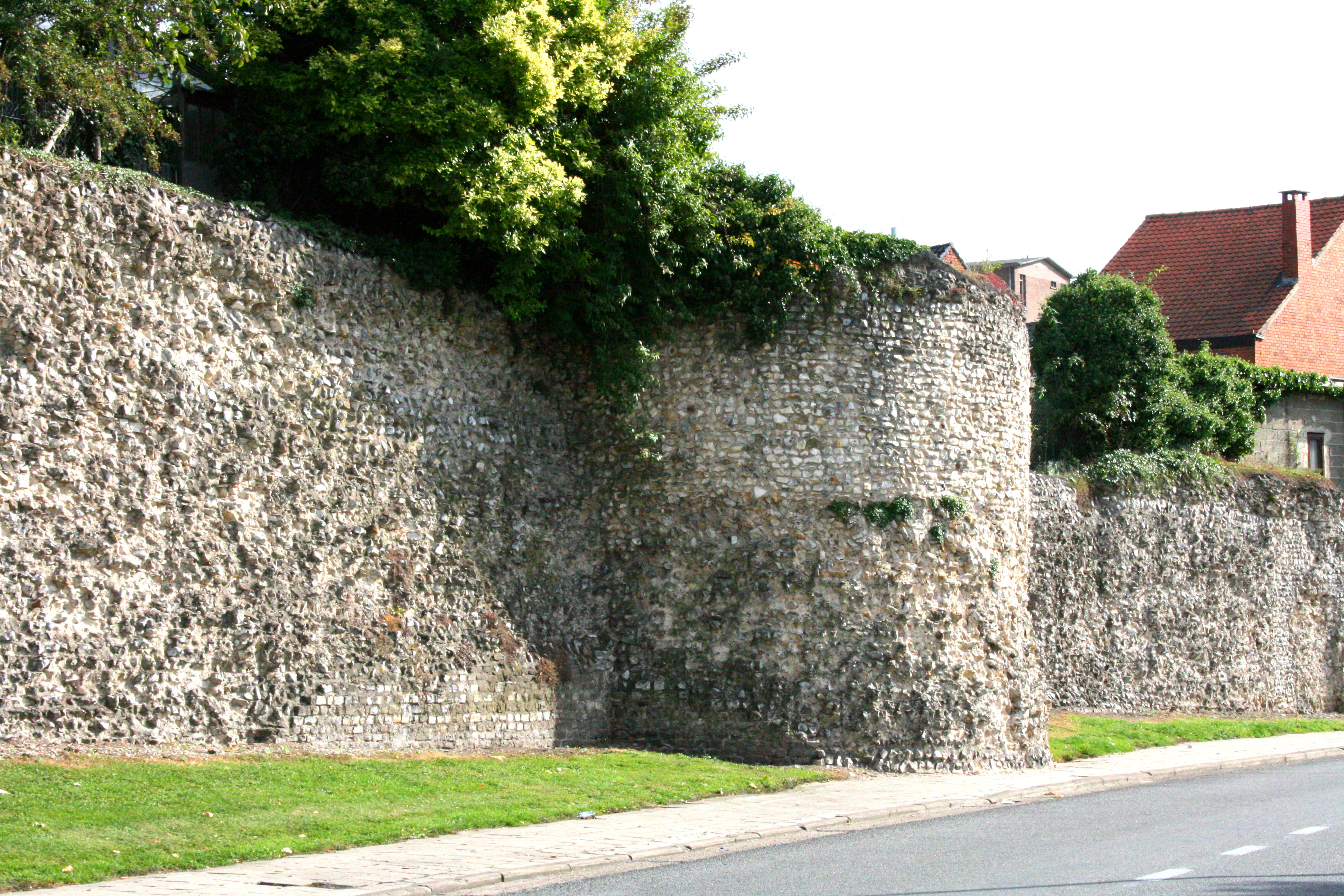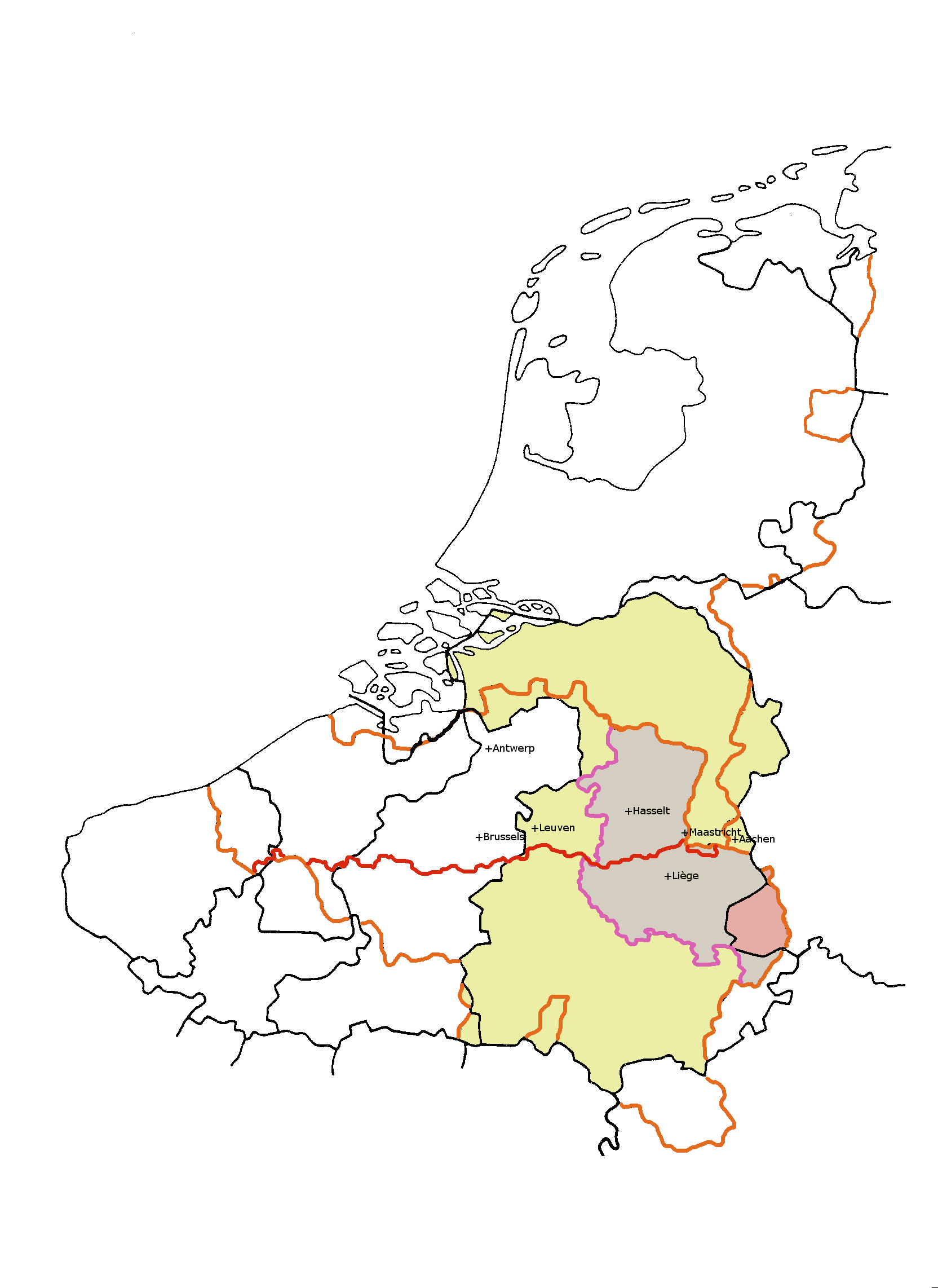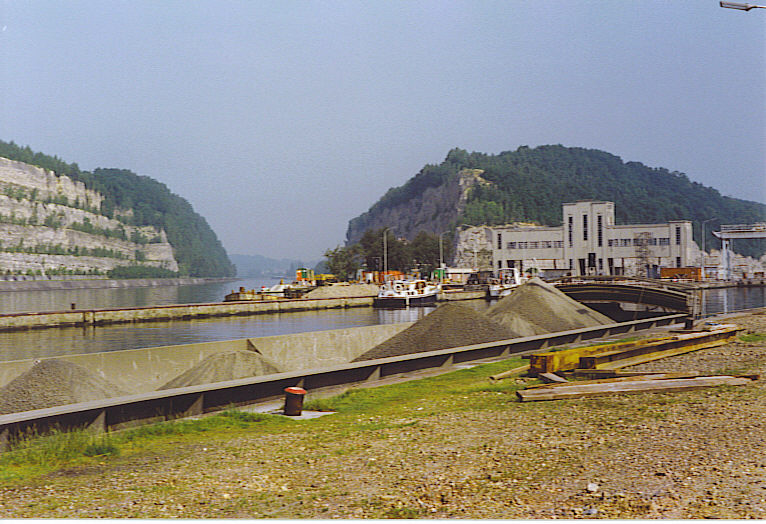|
Tongres
Tongeren (; french: Tongres ; german: Tongern ; li, Tóngere ) is a city and municipality located in the Belgian province of Limburg, in the southeastern corner of the Flemish region of Belgium. Tongeren is the oldest town in Belgium, as the only Roman administrative capital within the country's borders. As a Roman city, it was inhabited by the Tungri, and known as ''Atuatuca Tungrorum'', it was the administrative centre of the ''Civitas Tungrorum'' district. History ''Atuatuca Tungrorum'' The Romans referred to Tongeren as ''Aduatuca Tungrorum'' or ''Atuatuca Tongrorum'', and it was the capital of the large Roman province of ''Civitas Tungrorum'', an area which covered modern Belgian Limburg, and at least parts of all the areas around it. Before the Roman conquests, this area was inhabited by the group of Belgic tribes known as the ''Germani cisrhenani''. (Despite being known as the ''Germani'', whether they spoke a Germanic language is debated, and the names of their tribes ... [...More Info...] [...Related Items...] OR: [Wikipedia] [Google] [Baidu] |
Civitas Tungrorum
The ''Civitas Tungrorum'' was a large Roman administrative district dominating what is now eastern Belgium and the southern Netherlands. In the early days of the Roman Empire it was in the province of Gallia Belgica, but it later joined the neighbouring lower Rhine River border districts, within the province of Germania Inferior. Its capital was ''Aduatuca Tungrorum'', now Tongeren. Like many other Roman administrative districts, it was named after the tribal grouping that lived there, the Tungri, although that name is not known from the area before it became part of the Roman Empire. Also like other such districts, it became the basis for a medieval bishopric, but the bishops of Tongeren moved first to nearby Maastricht and then to Liège. Location The geographical boundaries of the ''civitas'' probably corresponded at least roughly to the area of the large medieval Catholic diocese of Liège, which was reduced in 1559. In modern terms this large diocese contained approximately ... [...More Info...] [...Related Items...] OR: [Wikipedia] [Google] [Baidu] |
Tongeren Romeinse Wallen
Tongeren (; french: Tongres ; german: Tongern ; li, Tóngere ) is a city and municipality located in the Belgian province of Limburg, in the southeastern corner of the Flemish region of Belgium. Tongeren is the oldest town in Belgium, as the only Roman administrative capital within the country's borders. As a Roman city, it was inhabited by the Tungri, and known as ''Atuatuca Tungrorum'', it was the administrative centre of the ''Civitas Tungrorum'' district. History ''Atuatuca Tungrorum'' The Romans referred to Tongeren as ''Aduatuca Tungrorum'' or ''Atuatuca Tongrorum'', and it was the capital of the large Roman province of ''Civitas Tungrorum'', an area which covered modern Belgian Limburg, and at least parts of all the areas around it. Before the Roman conquests, this area was inhabited by the group of Belgic tribes known as the ''Germani cisrhenani''. (Despite being known as the ''Germani'', whether they spoke a Germanic language is debated, and the names of their tribes ... [...More Info...] [...Related Items...] OR: [Wikipedia] [Google] [Baidu] |
Arrondissement Of Tongeren
The Arrondissement of Tongeren ( nl, Arrondissement Tongeren; french: Arrondissement de Tongres) is one of the three administrative arrondissements in the Province of Limburg, Belgium. It is both an administrative and a judicial arrondissement. However, the Judicial Arrondissement of Tongeren comprises the municipalities of Tongeren, Bocholt, Bree, Kinrooi, Meeuwen-Gruitrode, Dilsen-Stokkem and Maaseik in the Arrondissement of Maaseik and the municipalities of As, Genk, Opglabbeek and Zutendaal in the Arrondissement of Hasselt. The arrondissement was created in 1839 to form the Belgian part of the former arrondissement of Maastricht, which ceased to exist due to the splitting of Limburg. The canton of Borgloon was also moved from the arrondissement of Hasselt to the new arrondissement of Tongeren. Municipalities The Administrative Arrondissement of Tongeren consists of the following municipalities: * Alken * Bilzen * Borgloon * Heers * Herstappe * Hoeselt * Kortesse ... [...More Info...] [...Related Items...] OR: [Wikipedia] [Google] [Baidu] |
Aduatuca
Atuatuca (or Aduatuca) is the name of two ancient fortified settlements located in the eastern part of modern Belgium, between the Scheldt and Rhine rivers. The oldest one, ''Atuatuca Eboronum'', attested during the Gallic Wars (58–50 BC), was the stronghold of the Eburones. The other one, ''Atuatuca Tungrorum'' (modern Tongeren), founded around 10 BC, was the Roman-era capital of the ''Civitas Tungrorum'', inhabited by the Tungri. Name Attestations Atuatuca Eburonum The place name ''Atuatuca'' is first mentioned in the mid-first century BC by Julius Caesar to designate the stronghold of the Eburones: "...he aesarconcentrated the baggage of all the legions at Aduatuca. That is the name of a fort ( ''castellum'') situated almost in the middle of the territory of the Eburones." Whether ''Atuatuca'' or ''Aduatuca'' is the original form is uncertain. In the earliest surviving manuscript of Caesar's ''Gallic War'', dated to the early 9th c. AD, the name is given as ''Aduatuca ... [...More Info...] [...Related Items...] OR: [Wikipedia] [Google] [Baidu] |
Aduatuci
The Atuatuci (or Aduatuci) were a Gallic- Germanic tribe, dwelling in the eastern part of modern-day Belgium during the Iron Age. They fought the Roman armies of Julius Caesar during the Gallic Wars (58–50 BC). In the Battle of the Sabis (57 BC), the Atuatuci sent troops to assist their Belgic neighbours, the Nervii, Atrebates and Viromandui, but were too late to avoid an eventual Roman victory. After they withdrew to their oppidum (fortress), the Atuatuci were later defeated by the Romans during the siege of the Atuatuci (57 BC). According to Caesar, 4,000 of the Atuatici perished in the seizure of their stronghold, and 53,000 of them were reduced to slavery. Several years later in 54 BC the Atuatuci suffered further retribution when they were involved with their neighbours in a failed rebellion against the Romans. Following the devastation of the tribe, which left only a number of small groups, the Atuatuci disappeared from historical records and likely assimilated into n ... [...More Info...] [...Related Items...] OR: [Wikipedia] [Google] [Baidu] |
Tungri
The Tungri (or Tongri, or Tungrians) were a tribe, or group of tribes, who lived in the Belgic part of Gaul, during the times of the Roman Empire. Within the Roman Empire, their territory was called the '' Civitas Tungrorum''. They were described by Tacitus as being the same people who were first called "''Germani''" ( Germanic), meaning that all other tribes who were later referred to this way, including those in Germania east of the river Rhine, were named after them. More specifically, Tacitus was thereby equating the Tungri with the "''Germani Cisrhenani''" described generations earlier by Julius Caesar. Their name is the source of several place names in Belgium, Germany and the Netherlands, including Tongeren, Tongerlo Abbey, and Tongelre. image:Germanie-inferieure.jpg, 301x301px, The Roman province of Germania Inferior, showing Atuatuca, modern Tongeren, the capital of the Tungri (Tongres). Places associated with the Tungri are in bright green. It was on the road between Ami ... [...More Info...] [...Related Items...] OR: [Wikipedia] [Google] [Baidu] |
Riemst
Riemst (; li, Riems) is a small town and a municipality in the Belgian province of Limburg. Riemst is in the Flemish speaking area of Belgium. On January 1, 2018 Riemst had a total population of 16,665. The total area is 57.88 km² which gives a population density of 276 inhabitants per km². Riemst was the site of the Battle of Lauffeld The Battle of Lauffeld, variously known as Lafelt, Laffeld, Lawfeld, Lawfeldt, Maastricht, or Val, took place on 2 July 1747, between Tongeren in modern Belgium, and the Dutch city of Maastricht. Part of the War of the Austrian Succession, a F ..., fought in 1747. The bridge in the Borough Vroenhoven was part of the start of WW2, when the Germans launched a coordinated attack on the area. Paul Schiepers (born in 1919) was the last mayor of the borough of Riemst before it joined with the other boroughs to form the current town of Riemst. He died on August 18, 1978.https://www.riemst.be/sites/default/files/public/_development/3770_JU ... [...More Info...] [...Related Items...] OR: [Wikipedia] [Google] [Baidu] |
Caestert
Mount Saint Peter ( French: ''Montagne Saint-Pierre''; Dutch: ''Sint-Pietersberg''), also referred to as Caestert Plateau, is the northern part of a plateau running north to south between the valleys of the river Geer to the west, and the Meuse to the east. The plateau runs from Maastricht in the Netherlands, through Riemst in Belgian Limburg almost to the city of Liège in Belgium, thus defining the topography of this border area between Flanders, Wallonia and the Netherlands. The name of the hill, as well as the nearby village and church of Sint Pieter and the fortress of Sint Pieter, refers to Saint Peter, one of the Twelve Apostles. Principal characteristics The plateau, of which Mount Saint Peter is part, is bounded on the east by the Meuse river (Dutch: ''Maas'') and on the west by the Geer (''Jeker''). Since the 1930s, the Albert Canal divides the hill in two sections. Near the small Liège Province village of Lanaye (Dutch: ''Ternaaien''), the canal cuts through the r ... [...More Info...] [...Related Items...] OR: [Wikipedia] [Google] [Baidu] |
Julius Caesar
Gaius Julius Caesar (; ; 12 July 100 BC – 15 March 44 BC), was a Roman general and statesman. A member of the First Triumvirate, Caesar led the Roman armies in the Gallic Wars before defeating his political rival Pompey in a civil war, and subsequently became dictator from 49 BC until his assassination in 44 BC. He played a critical role in the events that led to the demise of the Roman Republic and the rise of the Roman Empire. In 60 BC, Caesar, Crassus and Pompey formed the First Triumvirate, an informal political alliance that dominated Roman politics for several years. Their attempts to amass power as were opposed by the within the Roman Senate, among them Cato the Younger with the frequent support of Cicero. Caesar rose to become one of the most powerful politicians in the Roman Republic through a string of military victories in the Gallic Wars, completed by 51 BC, which greatly extended Roman territory. During this time he both invaded Britain an ... [...More Info...] [...Related Items...] OR: [Wikipedia] [Google] [Baidu] |
Celts
The Celts (, see pronunciation for different usages) or Celtic peoples () are. "CELTS location: Greater Europe time period: Second millennium B.C.E. to present ancestry: Celtic a collection of Indo-European peoples. "The Celts, an ancient Indo-European people, reached the apogee of their influence and territorial expansion during the 4th century bc, extending across the length of Europe from Britain to Asia Minor."; . " e Celts, were Indo-Europeans, a fact that explains a certain compatibility between Celtic, Roman, and Germanic mythology."; . "The Celts and Germans were two Indo-European groups whose civilizations had some common characteristics."; . "Celts and Germans were of course derived from the same Indo-European stock."; . "Celt, also spelled Kelt, Latin Celta, plural Celtae, a member of an early Indo-European people who from the 2nd millennium bce to the 1st century bce spread over much of Europe."; in Europe and Anatolia, identified by their use of Celtic langu ... [...More Info...] [...Related Items...] OR: [Wikipedia] [Google] [Baidu] |
Gaul
Gaul ( la, Gallia) was a region of Western Europe first described by the Romans. It was inhabited by Celtic and Aquitani tribes, encompassing present-day France, Belgium, Luxembourg, most of Switzerland, parts of Northern Italy (only during Republican era, Cisalpina was annexed in 42 BC to Roman Italy), and Germany west of the Rhine. It covered an area of . According to Julius Caesar, Gaul was divided into three parts: Gallia Celtica, Belgica, and Aquitania. Archaeologically, the Gauls were bearers of the La Tène culture, which extended across all of Gaul, as well as east to Raetia, Noricum, Pannonia, and southwestern Germania during the 5th to 1st centuries BC. During the 2nd and 1st centuries BC, Gaul fell under Roman rule: Gallia Cisalpina was conquered in 204 BC and Gallia Narbonensis in 123 BC. Gaul was invaded after 120 BC by the Cimbri and the Teutons, who were in turn defeated by the Romans by 103 BC. Julius Caesar finally subdued the remaining p ... [...More Info...] [...Related Items...] OR: [Wikipedia] [Google] [Baidu] |
Ambiorix
Ambiorix (Gaulish "king of the surroundings", or "king-protector") ( 54–53 BC) was, together with Cativolcus, prince of the Eburones, leader of a Belgic tribe of north-eastern Gaul (Gallia Belgica), where modern Belgium is located. In the nineteenth century Ambiorix became a Belgian national hero because of his resistance against Julius Caesar, as written in Caesar's ''Commentarii de Bello Gallico''. Name It is generally accepted that ''Ambiorix'' is a Gaulish personal name formed with the prefix ''ambio-'' attached to ''rix'' ('king'), but the meaning of the first element is debated. Some scholars translate ''Ambiorix'' as the 'king of the surroundings' or 'king of the enclosure', by interpreting ''ambio-'' as a thematized form of ''ambi-'' ('around, on both sides') meaning 'surroundings' or else 'enclosure' (cf. Old Irish ''imbe'' 'enclosure'). Alternatively, Fredrik Otto Lindeman renders ''Ambiorix'' as the 'protector-king', by deriving ''ambio-'' from the Proto-In ... [...More Info...] [...Related Items...] OR: [Wikipedia] [Google] [Baidu] |




.jpg)


